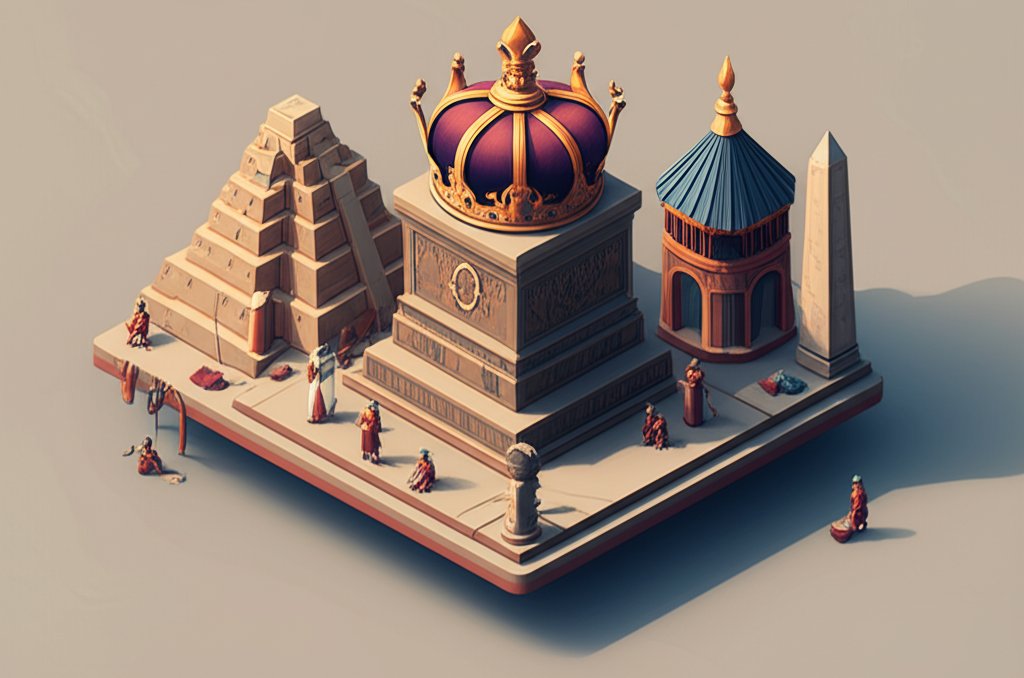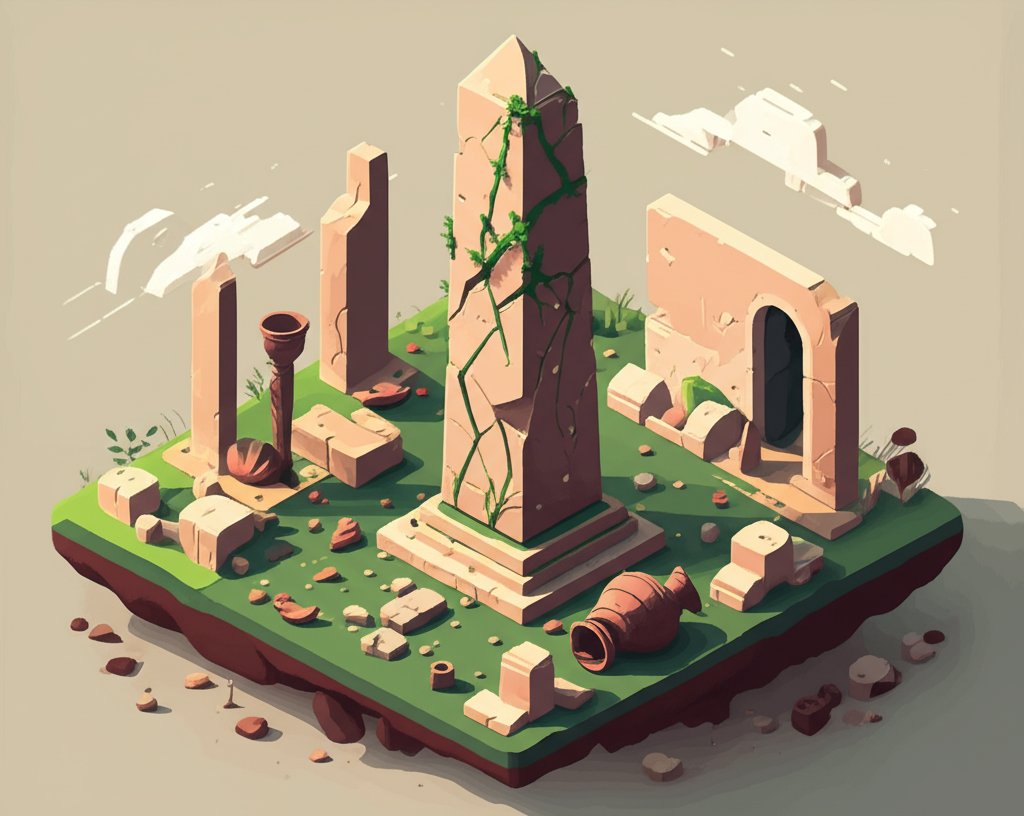Step back in time to an era carved by unparalleled ambition, visionary leadership, and monumental achievement. The story of humanity is intrinsically woven with the sagas of ancient dynasties – powerful ruling families who shaped the very cradle of civilization, charting the course of ancient history and leaving behind legacies that echo through millennia. From the sun-drenched sands of Egypt to the sprawling plains of ancient China, these dynastic lineages were the architects of order, the patrons of innovation, and the central figures in the rise and fall of magnificent, often lost empires.
This comprehensive article embarks on an unparalleled journey, meticulously designed to redefine your understanding of these historical titans. We will delve into the profound significance of dynastic rule, unveil the captivating methods of archaeology and historical inquiry that bring their stories to light, and traverse continents to explore the most influential historical dynasties the world has ever known. Prepare to uncover not just names and dates, but the very essence of power, culture, and the enduring human spirit that defined these extraordinary epochs.
To better understand how these powerful families rose and fell, it’s helpful to situate them within a comprehensive ancient history timeline, giving context to their reigns and influence.
Unearthing the Past: The Indispensable Role of Archaeology
The vibrant tapestry of ancient dynasties and lost empires would remain forever veiled were it not for the relentless dedication of archaeology. This scientific discipline acts as a crucial bridge to the distant past, allowing us to physically interact with the remnants of civilizations that have otherwise vanished into the annals of ancient history. It is through the meticulous excavation and analysis of material culture that we reconstruct the lives, beliefs, and immense achievements of these powerful forces.
How Archaeology Illuminates Ancient Dynasties
Archaeology provides a tangible, unfiltered window into the daily realities, architectural grandeur, and even the intimate details of ancient dynasties. While written records can be biased or incomplete, archaeological finds offer objective data:
- Royal Tombs and Burial Sites: The discovery of pharaohs’ tombs in Egypt’s Valley of the Kings, or Emperor Qin Shi Huang’s Terracotta Army in China, provides direct evidence of intricate funerary practices, beliefs about the afterlife, and the immense power wielded by dynastic rulers. These sites often contain grave goods that speak volumes about their era’s technology, art, and wealth.
- Palaces and Administrative Centers: Excavations of royal palaces, such as Knossos on Crete (associated with the Minoan civilization) or the Persian capital of Persepolis, reveal sophisticated architectural techniques, administrative layouts, and the scale of imperial governance. They show how these ruling families asserted their authority and managed their vast domains.
- Urban Planning and Infrastructure: The remains of ancient cities like Mohenjo-Daro (Indus Valley) or Teotihuacan (Mesoamerica) showcase advanced urban planning, water management systems, and public works – all indicative of a strong central authority, often dynastic, capable of mobilizing vast resources and labor.
Cutting-Edge Tools and Groundbreaking Discoveries
The field of archaeology is constantly evolving, with new technologies revolutionizing our ability to uncover lost empires and understand ancient dynasties.
- LiDAR (Light Detection and Ranging): This remote sensing technology uses pulsed laser light to map surfaces, even through dense jungle canopy. It has been instrumental in revealing vast, previously unknown Maya cities in Mesoamerica, dramatically reshaping our understanding of their dynastic networks and sophisticated agricultural systems.
- Ground-Penetrating Radar (GPR): GPR allows archaeologists to see beneath the earth’s surface without digging, identifying buried structures, walls, and tombs. This has been invaluable in mapping the extent of Roman cities or discovering hidden features in Egyptian archaeological sites.
- DNA Analysis and Isotopic Studies: By analyzing ancient DNA from human remains, researchers can trace familial lineages, migration patterns, and even specific diets, offering unprecedented insights into the genetic makeup and movements of dynastic families and their subjects. Isotopic analysis of teeth can reveal diet and geographical origins, shedding light on the lives of individuals, from commoners to dynasts.
- Digital Reconstruction: Sophisticated 3D modeling and virtual reality allow archaeologists to digitally reconstruct ancient buildings and cities, bringing lost empires to life and enabling more detailed study without further disturbing original sites.
Interpreting Fragments: From Artifacts to Epic Tales
The work of archaeology doesn’t end with discovery; it begins there. Each artifact, every carved stone, and every layer of earth tells a part of a larger story. Historians and archaeologists meticulously piece these fragments together, combining material evidence with textual analysis (where available) to create comprehensive narratives of ancient history.
- Pottery and Ceramics: The style, decoration, and composition of pottery can indicate trade routes, cultural influences, and technological advancements across different periods of historical dynasties.
- Weaponry and Tools: These provide insights into military capabilities, agricultural practices, and the level of technological sophistication of ancient empires.
- Art and Inscriptions: Hieroglyphs, cuneiform tablets, and monumental inscriptions found in tombs and temples often detail royal achievements, religious beliefs, and political events, offering direct voices from the rulers of ancient dynasties. The decipherment of scripts like the Rosetta Stone’s hieroglyphs was a cornerstone in understanding Egyptian ancient history.
Through this rigorous process, archaeology not only recovers the physical remains of the past but also breathes life into the untold stories of ancient dynasties, transforming buried ruins into vibrant chronicles of human civilization.
Defining Power: What Are Ancient Dynasties and Lost Empires?
To truly comprehend the monumental impact of ancient civilizations, it’s crucial to distinguish between and understand the profound interconnectedness of ancient dynasties and ancient empires. These concepts are foundational to navigating the vast stretches of ancient history and appreciating the scale of power they represented.
The Core of a Historical Dynasty
At its most fundamental, a historical dynasty refers to a sequence of rulers from the same family or lineage, wherein power is typically inherited through hereditary succession. This system was the prevailing model of governance for much of ancient history, offering a framework for political stability and cultural continuity.
- Hereditary Succession: The defining characteristic is the passing of power from one generation to the next within a single family. This could be father to son, mother to daughter (though less common in most ancient patriarchal societies), or even through extended familial networks.
- Legitimacy and Divine Right: Dynasties often claimed legitimacy through divine mandate, asserting that their right to rule was granted by gods or a higher cosmic order. Examples include the Egyptian pharaohs, who were considered divine, or the Chinese “Mandate of Heaven.” This belief system helped maintain social order and justified their authority.
- Cultural and Institutional Continuity: Dynasties were not just about bloodlines; they represented the institutionalization of power within a family unit that typically established long-lasting traditions, laws, and governance systems. These systems fostered a sense of national identity, collective memory, and often led to periods of remarkable cultural flourishing.
- Examples: The Julio-Claudian dynasty of Rome, the Shang and Zhou dynasties of China, the Hyksos and Ptolemaic dynasties in Egypt, and the Achaemenid dynasty of Persia are prime examples of historical dynasties that left an indelible mark.
The Grandeur of Ancient Empires
While a dynasty defines a ruling family, an ancient empire describes a vast, multi-ethnic, and often multi-cultural political entity characterized by the expansion of its power and influence over diverse territories and peoples. Empires typically encompass multiple kingdoms, provinces, or city-states, governed by a central authority.
- Territorial Expansion: Empires are defined by their immense geographical scale, often built through military conquest and the subjugation of neighboring polities.
- Centralized Authority: A single, supreme power (often a dynastic ruler or an institution) governs the entire empire, imposing unified administrative, legal, and economic systems across disparate populations.
- Diverse Populations: Empires are melting pots of cultures, languages, and religions. Managing this diversity, often through a combination of force, infrastructure, and an overarching imperial ideology, was a hallmark of ancient empires.
- Economic Prowess: Vast resources, tribute from conquered lands, and extensive trade networks fueled imperial wealth and power, often leading to impressive public works and military strength.
- Intertwined Fates: Frequently, a successful historical dynasty becomes the ruling house of an empire it helped forge, intertwining their fates. The Han Dynasty’s imperial reach in China, the Roman Empire under its various imperial dynasties, and the Achaemenid Persian Empire are powerful examples where dynastic rule propelled imperial expansion and stability.
Why Dynastic Rule Prevailed in Ancient History
The prevalence of dynastic rule across virtually every complex society in ancient history speaks to its perceived advantages in an pre-modern world:
- Stability and Predictability: Hereditary succession, despite its potential for incompetent rulers, offered a clear line of authority, reducing power vacuums and civil strife that could erupt during transitions. This predictability was highly valued.
- Accumulation of Knowledge and Experience: Successive generations within a ruling family could theoretically inherit and build upon the administrative experience and accumulated knowledge of their predecessors.
- Unifying Symbol: A dynastic family often served as a potent symbol of national identity and continuity, fostering loyalty and cohesion among diverse populations within a kingdom or ancient empire.
- Long-Term Vision: Rulers with a secure hereditary succession might be more inclined to plan for the long term, undertaking ambitious projects like great walls, irrigation systems, or monumental architecture, knowing their lineage would benefit.
Understanding these intertwined concepts allows us to appreciate the enduring significance of these magnificent, yet often mysterious, ancient dynasties that shaped the very bedrock of global civilization.
Global Tapestry: Key Historical Dynasties and Lost Empires Across Continents

The annals of ancient history are replete with the extraordinary sagas of historical dynasties and the lost empires they governed. These ruling families, scattered across every continent, left indelible marks on human civilization, forging cultures, inspiring technologies, and setting the stage for the modern world. Let’s embark on a journey through time, exploring some of the most influential.
The Enduring Legacy of Chinese Dynasties
China’s ancient history is a rich tapestry woven with a continuous thread of dynastic rule, a testament to the organizational power and cultural depth of its ruling houses. Each brought unique contributions, shaping the unified nation that endures.
- Xia Dynasty (c. 2070–1600 BCE): Often considered the first ancient dynasty in China, the Xia laid foundational elements of governance and early state formation, though its historical existence remains a subject of archaeological debate and ongoing research.
- Shang Dynasty (c. 1600–1046 BCE): Ushered in the Chinese Bronze Age, known for its advanced bronzeware, the earliest form of Chinese writing on oracle bones, and sophisticated religious practices. Their capital cities, like Anyang, are rich archaeology sites.
- Zhou Dynasty (c. 1046–256 BCE): The longest-lasting Chinese dynasty, it introduced the “Mandate of Heaven,” a concept legitimizing dynastic rule based on divine approval, which heavily influenced subsequent historical dynasties. It saw the rise of feudalism and foundational philosophies like Confucianism and Taoism.
- Qin Dynasty (221–206 BCE): Short-lived but profoundly impactful. Under Emperor Qin Shi Huang, China was unified, weights, measures, and writing were standardized, and construction of the Great Wall began. It established the first centralized imperial system, setting the precedent for future ancient empires.
- Han Dynasty (206 BCE–220 CE): Often heralded as a golden age, the Han expanded the empire, created a meritocratic bureaucracy, developed the Silk Road, and saw major advancements in science and arts. The term “Han Chinese” derives from this powerful ancient dynasty, signifying its lasting cultural impact.
Pharaohs, Pyramids, and Egyptian Ancient Dynasties
Ancient Egypt’s ancient history is synonymous with its long succession of pharaonic historical dynasties, whose rule over the fertile Nile ensured immense agricultural wealth and supported monumental projects.
- Early Dynastic Period (c. 3100–2686 BCE): The unification of Upper and Lower Egypt under powerful pharaohs, establishing the foundational political and religious structures that would define Egyptian civilization for millennia.
- Old Kingdom (c. 2686–2181 BCE): The “Age of the Pyramids,” a period of strong centralized government, immense wealth, and the construction of iconic structures like the Giza Pyramids, reflecting the absolute power of this ancient dynasty.
- Middle Kingdom (c. 2055–1650 BCE): A period of reunification and cultural flourishing after an intermediate period of fragmentation, with advancements in literature and art.
- New Kingdom (c. 1550–1070 BCE): The zenith of Egyptian imperial power, with pharaohs like Thutmose III, Akhenaten, Tutankhamun, and Ramesses II expanding the empire’s reach. This era is a treasure trove for archaeology, particularly the rich discoveries in the Valley of the Kings.
- Ptolemaic Dynasty (305–30 BCE): Founded by Ptolemy I Soter, a general of Alexander the Great, this Hellenistic ancient dynasty blended Greek and Egyptian cultures, culminating in the legendary reign of Cleopatra VII before Egypt fell to Rome.
Mesopotamian Origins and the First Lost Empires
The Near East, often called the cradle of civilization, witnessed the birth of some of the very first ancient dynasties and ancient empires, pioneering concepts of law, writing, and urban living. Many of these regions contain lost empires awaiting further archaeological exploration.
- Sumerian City-States (c. 4500–1900 BCE): While not a single dynasty, the independent Sumerian city-states (e.g., Uruk, Ur, Lagash) and their ruling “ensi” or “lugal” established the world’s first cities, writing (cuneiform), and complex social structures, forming a bedrock for later historical dynasties. Many of these cities were eventually abandoned and became lost empires, only to be rediscovered through archaeology.
- Akkadian Empire (c. 2334–2154 BCE): Founded by Sargon of Akkad, this was arguably the world’s first true ancient empire, uniting Sumerian cities and expanding its influence across Mesopotamia, showcasing the genesis of imperial rule. Its capital, Akkad, remains one of history’s great lost empires, its exact location still sought.
- Babylonian Empire (c. 1894–539 BCE): Known for Hammurabi’s Code, one of the earliest and most complete written legal codes, and for being master astronomers and mathematicians. The city of Babylon itself, though famously re-discovered, embodies a once-mighty dynastic capital.
- Assyrian Empire (c. 2500–609 BCE): A formidable military power, the Neo-Assyrian Empire was one of the largest ancient empires of its time, famed for its effective administration and its impressive palaces and libraries (like Ashurbanipal’s library in Nineveh), which have been invaluable sources for ancient history.
Persian Might and Hellenistic Successors
The Near East also gave rise to even grander ancient empires that profoundly impacted Europe and Asia.
- Achaemenid Persian Empire (c. 550–330 BCE): Founded by Cyrus the Great, this was the largest empire the world had yet seen, spanning three continents. It was renowned for its efficient administration, network of roads, and policy of tolerance, representing a truly global ancient empire.
- Hellenistic Dynasties (323–31 BCE): Following Alexander the Great’s conquests, his vast empire fragmented into powerful Hellenistic kingdoms ruled by his generals and their descendants. The Antigonids in Macedon, the Seleucids in the Near East, and the Ptolemies in Egypt (as mentioned) established new forms of ancient dynasty blending Greek culture with local traditions. These successor kingdoms, while influential, often represent the fragmentation of a larger, now lost empire.
The Roman Imperium: Dynastic Shifts and Lasting Impact
Europe’s ancient history is profoundly shaped by the transformative power of the Romans, whose historical dynasties and expansive empire left an indelible mark on Western civilization.
- Roman Empire (27 BCE–476 CE in the West; 330–1453 CE in the East): While Rome began as a Republic, it evolved into an ancient empire ruled by powerful dynastic families starting with Augustus and the Julio-Claudians. Later historical dynasties like the Flavians, Antonines, and Severans expanded the empire, codified law (a cornerstone of Western legal systems), built unparalleled infrastructure, and spread Roman culture and language across vast territories. The Byzantine Empire, the eastern continuation, maintained its own distinct historical dynasties for another thousand years, preserving much of classical learning.
Unveiling Lost Empires of the Americas: Maya, Aztec, and Inca
Before European contact, sophisticated ancient dynasties and ancient empires flourished in the Americas, developing unique political, social, and cultural systems that rivaled those of the Old World. Archaeology has been crucial in piecing together their stories, often revealing truly lost empires.
- Maya Dynasties (c. 2000 BCE–1697 CE): Not a single empire, but a network of powerful city-states in Mesoamerica, each ruled by its own historical dynasty (e.g., Tikal, Calakmul). They developed an advanced writing system, complex calendars, sophisticated mathematics, and remarkable architectural feats. Many of their magnificent cities were swallowed by the jungle and became lost empires, only to be slowly rediscovered and explored by archaeology.
- Aztec Empire (c. 1345–1521 CE): A powerful triple alliance based in the Valley of Mexico, centered around the city of Tenochtitlan. While not a bloodline dynasty in the strictest sense of singular succession, their ruling lineage of “tlatoani” exerted immense imperial control through conquest and tribute, forming a dominant ancient empire that was abruptly “lost” to invasion.
- Inca Empire (c. 1400–1532 CE): The largest empire in pre-Columbian America, stretching along the Andes. The Sapa Inca, their dynastic emperor, ruled over a highly centralized agrarian society connected by an extensive road system. Despite lacking a conventional written language, they used sophisticated record-keeping (quipu) and engineering, making it a unique ancient empire whose urban centers, like Machu Picchu, were long “lost” to the outside world.
These examples represent a fraction of the incredible ancient dynasties and lost empires that have shaped our world. Their diverse approaches to governance, their cultural expressions, and their enduring legacies continue to provide fertile ground for archaeology and ancient history to explore and understand.
The Cycles of Power: Rise, Zenith, and Fall of Ancient Dynasties
The grand narratives of ancient dynasties and ancient empires are characterized by profound cyclical patterns: periods of brilliant expansion and stability giving way to gradual decline and eventual collapse. Understanding the complex interplay of forces that propelled them to greatness, as well as those that led to their demise, offers timeless lessons in ancient history and the intricate dynamics of human societies.
Pillars of Prosperity: What Led to Dynastic Success?
The initial success and remarkable longevity of many ancient dynasties were built upon several interconnected strengths:
- Strong, Centralized Governance: A clear succession plan, often formalized through dynastic rule, minimized internal strife and provided invaluable continuity. Effective administration, encompassing a functioning bureaucracy, efficient tax collection, and a robust justice system, allowed rulers to manage vast territories and populations. Legal codes, such as the Code of Hammurabi or Roman Law, provided societal order and a framework for justice, reinforcing the authority of the ruling historical dynasty.
- Unifying Ideology and Cultural Cohesion: Beyond political structures, cultural unity and a shared identity were vital. Dynasties strategically promoted a unifying ideology – whether a state religion, a foundational myth, or a philosophical system like Confucianism – to legitimize their rule, foster loyalty, and create a collective identity.
- Monumental Achievements & Infrastructure: Lavish monumental architecture (pyramids, temples, palaces), impressive public works (roads, aqueducts, irrigation systems), and the patronage of arts, literature, and sciences showcased the dynasty’s power, prestige, and prosperity. These not only garnered public support and awe but also facilitated economic activity and military movement.
- Military Superiority and Strategic Expansion: A strong, well-organized military was paramount for both defense and expansion. It allowed ancient empires to conquer new territories, secure vital trade routes, and extract tribute, fueling economic prosperity. Strategic expansion often brought new resources, technologies, and labor into the dynastic fold.
- Technological and Agricultural Innovation: Innovations in agriculture (e.g., irrigation, new crops), metallurgy (e.g., bronze, iron), and engineering underpinned success, leading to increased food production, improved tools, and enhanced infrastructure, supporting larger populations and more complex societies.
The Inevitable Cracks: Causes of Imperial Decline and Fall
Even the most formidable ancient dynasties eventually faced challenges that eroded their power, leading to fragmentation or outright collapse, leaving behind lost empires.
- Internal Strife and Succession Crises: Disputed successions, often leading to civil wars between rival claimants or powerful factions, could destabilize an empire for generations, diverting resources and attention from external threats.
- Corruption and Ineffective Governance: Widespread corruption within the bureaucracy, excessive taxation, and widening economic inequality could alienate the populace, trigger revolts, and undermine central authority.
- Social Unrest and Ethnic Tensions: Class divisions, religious persecution, or unresolved ethnic tensions within multi-ethnic ancient empires could simmer and eventually erupt into widespread unrest, weakening the state from within.
- External Pressures and Invasions: Constant warfare with neighboring powers, while sometimes leading to expansion, often drained treasuries and manpower, causing overextension. Nomadic invasions or migrations, like those that plagued the Roman and Chinese empires, could overwhelm borders and lead to territorial loss.
- Environmental Factors and Climate Change: Prolonged droughts, devastating floods, or broader climate shifts could devastate agricultural production, leading to famine, disease, and mass displacement, exacerbating existing internal weaknesses and making even the most powerful historical dynasties vulnerable.
- Overextension and Administrative Burden: The sheer size of many ancient empires eventually became a liability. The costs of maintaining borders, administering distant provinces, and suppressing revolts could become unsustainable, making central control difficult to enforce.
When Dynasties Vanish: The Nature of Lost Empires
The “fall” of a dynasty or empire rarely meant its complete disappearance overnight. Often, it was a gradual process of decline, fragmentation, and absorption. What makes an empire “lost” typically involves:
- Loss of Central Authority: The ruling dynasty is overthrown or loses control, leading to a power vacuum or fragmentation into smaller states.
- Abandonment of Cities: Major urban centers, the heart of these ancient empires, are depopulated due to war, disease, environmental collapse, or economic decline. These become rich targets for future archaeology.
- Disappearance of Written Records: If the writing system is lost or records are destroyed, the memory of an empire and its historical dynasties can literally vanish, only to be pieced together much later.
- Overgrowth and Natural Reclamation: Cities and structures are consumed by natural environments, becoming buried under jungle, sand, or earth, literally becoming lost empires awaiting rediscovery.
The combined effect of these factors often created a perfect storm, transforming once-mighty historical dynasties into mere whispers of ancient history, their grand lost empires sleeping beneath layers of earth, awaiting the archaeologist’s spade.
Beyond the Ruins: The Enduring Echo of Ancient History

While the specific ancient dynasties and lost empires of antiquity may have physically vanished, their influence upon our modern world is undeniably profound and enduring. The study of ancient history is not merely an academic exercise; it is an essential endeavor that connects us to the very roots of our current societies, systems, and shared human story.
Shaping Modern Governance and Society
The historical dynasties of old were the primary laboratories for early state formation, pioneering governance models, bureaucratic systems, and legal codes that laid the foundational groundwork for modern nation-states.
- Legal Systems: The Code of Hammurabi from ancient Mesopotamia, with its emphasis on codified law, or the sophisticated Roman legal system, whose principles still influence jurisprudence across the Western world, are direct legacies.
- Bureaucracy and Administration: Large ancient empires developed complex administrative structures to manage vast territories, collect taxes, and maintain order. The efficiency of the Persian bureaucracy or the meritocratic civil service system developed by early Chinese historical dynasties offered blueprints for effective governance that continue to be studied and adapted.
- Political Philosophy: Writings from ancient Greece and China, often emerging during or after periods of dynastic struggle, explored fundamental questions of governance, justice, and the ideal state, influencing thinkers from the Enlightenment to modern political theorists.
- Urban Planning and Infrastructure: The ability of ancient dynasties to organize labor for monumental projects like the Great Wall, Roman aqueducts, or Maya ceremonial centers demonstrates early sophisticated engineering and urban planning principles.
Cultural and Intellectual Legacies
The cultural, scientific, and technological advancements fostered by ancient dynasties were foundational, propelling humanity forward and demonstrating an incredible capacity for organization and creativity.
- Art and Architecture: The artistic and architectural achievements of these eras—from the Egyptian pyramids and temples to the Greek Parthenon, the Roman Colosseum, and the intricate Maya carvings—still inspire wonder and serve as cultural touchstones. They embody aesthetic ideals and engineering feats that continue to influence design and construction.
- Philosophy and Religion: The philosophical and religious traditions nurtured by ancient dynasties—Confucianism, Taoism, Zoroastrianism, and the foundational elements of Judaism, Christianity, and Islam—continue to influence billions today, shaping moral codes, societal values, and worldviews.
- Science and Mathematics: Advancements in mathematics, astronomy, and medicine made by civilizations like the Babylonians, Egyptians, Greeks, and Chinese millennia ago are still foundational to our understanding of the world. The concept of zero, the Pythagorean theorem, and early astronomical observations are direct echoes.
- Language and Literature: Many languages spoken today trace their roots to the tongues of ancient empires. Epic poems, historical accounts, and philosophical treatises from these periods offer timeless narratives and insights into the human condition, continuing to be studied and reinterpreted.
Archaeology continually unearths new details, and history reinterprets past narratives, ensuring that the stories of these forgotten rulers and their magnificent realms remain vibrant and relevant. The grandeur and fall of these ancient dynasties, and the rediscovery of their lost empires, provide timeless lessons on power, society, and the enduring human spirit. Their secrets continue to profoundly impact our collective ancient history, making the study of the past an active, living exploration of ourselves.
Conclusion
Our profound journey through the rich tapestry of ancient dynasties and the compelling narratives of lost empires reveals a world of awe-inspiring achievements, complex political maneuvers, and the relentless march of time. We have explored the very definitions underpinning these ancient powers, witnessed the indispensable role of archaeology in unearthing their physical remnants, and understood how meticulous historical inquiry deciphers their written legacies. From the venerable historical dynasties of China and the enigmatic pharaohs of Egypt, to the vast ancient empires of Mesopotamia, Persia, Rome, and the intricate societies of the Americas, each ruling lineage has left an indelible, multifaceted mark on the human story.
The rise, zenith, and eventual fall of these ancient dynasties offer timeless lessons on the delicate balance between effective governance, cultural cohesion, military might, and environmental resilience. Their stories are far more than mere relics of the past; they are enduring chronicles of human ingenuity, leadership, ambition, and the ultimate impermanence of even the mightiest civilizations. Delving into the secrets of these ancient powers deepens our understanding of our shared heritage and illuminates the long, winding path that led to the world we inhabit today.
We encourage you to continue to explore, question, and unearth the past, for in its depths lie the fundamental truths of our collective human experience, shaping our present and guiding our future. The echoes of ancient history resonate vibrantly still, inviting us to learn from the triumphs and follies of those who came before.
FAQ
Q1. What fundamentally defines an Ancient Dynasty?
A1. An Ancient Dynasty is defined as a succession of rulers from the same family or lineage, typically gaining power through hereditary succession (birthright). These families established and maintained control over a particular region or ancient empire for extended periods, providing a consistent framework for governance










